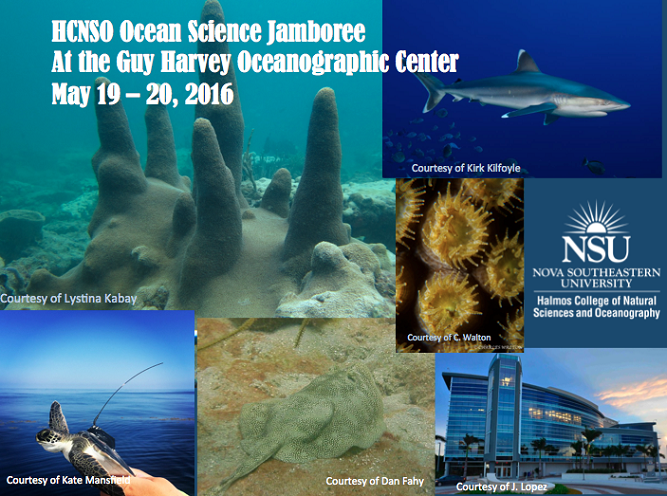Extensive phenotypic variation in Caribbean acroporid hybrids is likely a mechanism for adaptation to changing environments
Location
Guy Harvey Oceanographic Center Facility
Start
5-19-2016 10:00 AM
End
5-19-2016 10:15 AM
Abstract
The merging of two genomes through hybridization produces a unique combination of traits and phenotypic variation in the hybrids. This phenotypic variation may promote hybrid adaptation to habitats not accessible to the parent species. While hybridization is common in corals, evidence for adaptation to new habitats due to morphological innovation in coral hybrids is missing. In the past, hybridization between Caribbean Acropora palmata (elkhorn) and A. cervicornis (staghorn) corals was rare and restricted to the F1 generation. New genetic data indicates that hybrids are now mating with each other and are capable of mating with A. palmata and A. cervicornis. In parallel, a variety of intermediate morphologies to the arborescent staghorn and elkhorn shaped parental species are now observed. Here, we conducted morphometric analyses using high-resolution 3D scans and scanning electron microscopy on Caribbean acroporid colonies representing the continuum of phenotypes between A. cervicornis and A. palmata and correlated the data with the genetic origin of the hybrid (i.e. F1, F2 or backcross). These data together with recent field observations of higher disease resistance, higher thermal tolerance, higher hybrid abundance, and hybrid habitat expansion suggests that the hybrids’ ecological role and evolutionary potential is changing. Thus, coral hybrids are a possible and probable mechanism for coral adaptation to changing environmental conditions.
Extensive phenotypic variation in Caribbean acroporid hybrids is likely a mechanism for adaptation to changing environments
Guy Harvey Oceanographic Center Facility
The merging of two genomes through hybridization produces a unique combination of traits and phenotypic variation in the hybrids. This phenotypic variation may promote hybrid adaptation to habitats not accessible to the parent species. While hybridization is common in corals, evidence for adaptation to new habitats due to morphological innovation in coral hybrids is missing. In the past, hybridization between Caribbean Acropora palmata (elkhorn) and A. cervicornis (staghorn) corals was rare and restricted to the F1 generation. New genetic data indicates that hybrids are now mating with each other and are capable of mating with A. palmata and A. cervicornis. In parallel, a variety of intermediate morphologies to the arborescent staghorn and elkhorn shaped parental species are now observed. Here, we conducted morphometric analyses using high-resolution 3D scans and scanning electron microscopy on Caribbean acroporid colonies representing the continuum of phenotypes between A. cervicornis and A. palmata and correlated the data with the genetic origin of the hybrid (i.e. F1, F2 or backcross). These data together with recent field observations of higher disease resistance, higher thermal tolerance, higher hybrid abundance, and hybrid habitat expansion suggests that the hybrids’ ecological role and evolutionary potential is changing. Thus, coral hybrids are a possible and probable mechanism for coral adaptation to changing environmental conditions.


